Across the globe, only a handful of countries end in ‘land’. These countries include Finland, Iceland, Ireland, the Netherlands, Poland, Switzerland, Thailand, New Zealand, England, and Scotland. Read on to start on a captivating journey through some of these unique countries’ cultures, geography, cuisines, and the unforgettable experiences they offer. From the enchanting landscapes of Finland, Iceland, and Greenland to the vibrant heritage found in Poland, Thailand, and New Zealand, these contrasting destinations all attract people to them. Learn more about the iconic landmarks of England, embrace the raw wilderness in Scotland, and indulge in all the world has to offer by exploring eight countries that end in ‘land’.
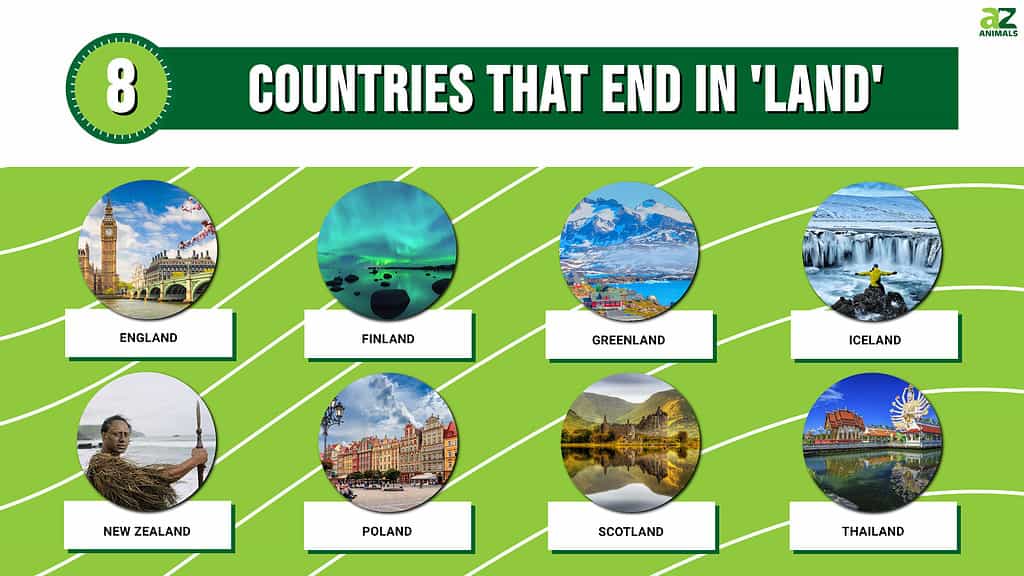
1. England
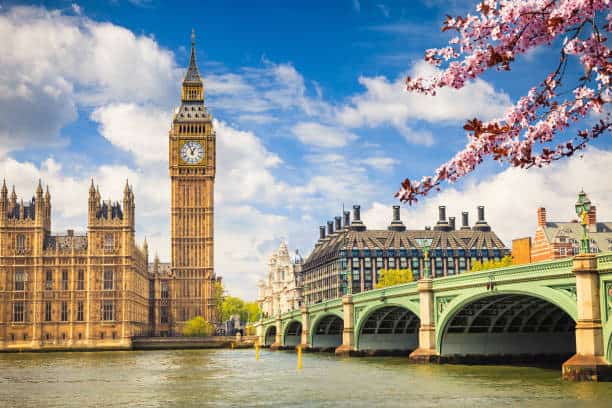
Built 164 years ago, Elizabeth Tower — commonly known as Big Ben — is one of the most famous landmarks in London. Rising 320 feet into the air, it is a recognizable symbol of England’s capital.
©sborisov/iStock / Getty Images Plus via Getty Images
Culture and Traditions
England — one of four countries that make up the United Kingdom — is commonly associated with the British Royal family, tea drinking, The Beatles, and Shakespeare. Working under the Church of England, their government is a constitutional monarchy. After Queen Elizabeth’s 70-year reign, King Charles III ascended to the throne as the current monarch.
Historically, England was a very homogenous country. Throughout the years, culture has grown to welcome diverse contributions from Afro-Caribbeans, Asians, Muslims, and other immigrant groups. English cuisine is based on beef, lamb, pork, chicken, and fish. Fish, usually cod or haddock, is commonly served alongside chips (American French fries). Even though fish and chips, beans on toast, and bangers and mash are still staple dishes, the food scene in England has seen heavy influence from Indian, Chinese, Mediterranean, and Italian cuisine.
While Halloween, Christmas, and New Year’s Day are celebrated, England has its own unique traditions as well. Guy Fawkes Night, otherwise known as Bonfire Night, takes place on the fifth of November. It commemorates the prevention of Guy Fawkes from bombing the Houses of Parliament. Celebrated each summer since the early 18th century, the Trooping the Color parade is a nationally observed military event. This highly acclaimed holiday celebrates the current monarch’s birthday. The beginning of May brings May Day. This festival, characterized by music and dancing, helps banish the dark of winter, celebrate the warmth and fertility of summer, and bring forth autumn’s golden harvest.
Geography, Weather, and Notable Landmarks
England features plentiful castles, palaces, and historic sites. Plus, with natural wonders like the Jurassic Coast, Cornwall, and the Peak District, there is no shortage of gorgeous landscapes to see. It boasts a temperate and generally stable temperature year-round, without frequent temperature extremes. England has an average temperature of 40 degrees Fahrenheit in the winter and 60 degrees Fahrenheit in the summer. The best time to visit is during Spring (late March to early June) and fall (September to November).
England boasts a wide range of notable landmarks, such as Windsor Castle, the oldest royal residence still in use today. Another iconic destination is Stonehenge, a mesmerizing monument built thousands of years ago to serve as a giant astronomical calendar, tracking the movements of the sun, moon, and stars.
London, the largest city in the United Kingdom, is both the capital of England and the United Kingdom. It is home to an array of popular attractions, including Buckingham Palace, the official home of the UK’s sovereigns since 1837. The Houses of Parliament, coined the Palace of Westminster, is also within the city center. This site serves as the country’s main government building and is home to Big Ben, one of London’s most iconic landmarks. Other widely recognized places include Westminster Abbey, a royal church that boasts stunning architecture, and the London Eye, the largest observation wheel in Europe. If you’re considering a trip to the UK, England offers a wide variety of experiences for those who love food, history, and adventure!
2. Finland

Lapland, Finland, is one of the best places to see the aurora borealis since it is visible 200 nights out of the year.
©Smelov/Shutterstock.com
Culture and Traditions
Finland, located in Northern Europe, is known for its natural beauty and abundant cultural heritage. In its early history, Finland was part of Sweden — and then Russia — until it declared independence in 1917. Finns have an egalitarian culture, which means there is no class system. They also believe all people are equal — regardless of gender, race, religion, income, or age. Instead, their culture is based on principles of respect and interdependence.
With a culture deeply rooted in the idea of living simply, Finnish people have a strong appreciation for their natural surroundings. This admiration is reflected in their love for hiking, fishing, and other outdoor activities. Sauna, a traditional practice in Finland, is special in their culture, offering relaxation, rejuvenation, and social bonding time. They even have a Midsummer tradition in which people celebrate the arrival of summer. Popular activities include lighting bonfires, bathing in saunas, barbecuing, fishing, and boating. Finland also celebrates various other events throughout the year, such as the May Day festival, a national holiday that celebrates spring. Joulu, the Finnish Christmas celebration, is a highlight of the winter season for people of all ages.
Geography, Weather, and Notable Landmarks
Finland covers an area of 130,559 square miles and has a population of over 5.6 million residents. Finland boasts plentiful wildlife and a diverse geography that includes picturesque lakes, dense forests, and the awe-inspiring Northern Lights. Because this country is one of the world’s northernmost and geographically remote places, it is subject to a severe climate.
Temperatures vary greatly by region. The average in the summer is anywhere between 45 to 62 degrees Fahrenheit and 10 to 19 degrees Fahrenheit in the winter. The country experiences distinct seasons, with long, cold, dark winters and bright, pleasant summers. Because of this stark difference, the best time to visit Finland depends greatly on what you plan to do there. Winter, though frigid, offers opportunities for thrilling activities like snowmobiling and witnessing the enchanting Aurora Borealis. The summer months (June, July, and August) are the perfect time to explore Finland’s beautiful landscapes, enjoy outdoor festivals, and experience the Midnight Sun phenomenon.
Helsinki is the capital and largest city in Finland, known for its innovative art, culture, and historic architecture. It features the Helsinki Olympic Stadium, Helsinki Cathedral, Old Market Hall, and the Kiasma Contemporary Art Museum. Outside of the capital, there is still lots to see! Some other notable landmarks include the archipelago of Turku and the historical Suomenlinna Fortress. Nuuksio and Oulanka, two of Finland’s most breathtaking national parks, are great for outdoor adventuring or wildlife watching. Whether you’re seeking tranquility in nature or want to immerse yourself in a new culture, Finland offers something for everyone!
3. Greenland

Greenland offers a variety of picturesque landscapes for visitors, including mountains, fjords, tundra, and glaciers.
©muratart/Shutterstock.com
Culture and Traditions
The majority of people in Greenland descended from Inuit people, which heavily influenced the nation’s culture and way of life. Inuits have inhabited the region for thousands of years, with their heritage reflected predominantly in art, music, and cuisine. Traditional hunting and fishing practices are still an integral part of their life, further connecting the locals to their natural surroundings. Dog sledding is also an essential cultural activity among the people of this country. A nationally celebrated tradition is the first seal hunt, an important rite of passage for 13-year-old boys. This event is symbolic of growth and presents the birthday boy with an official hunter title.
Geography, Weather, and Notable Landmarks
Greenland, the world’s largest island, is a captivating destination that showcases awe-inspiring landscapes and a fascinating way of life. Situated between the Arctic and Atlantic Oceans, the land features ice sheets, towering glaciers, and rugged mountains. It has a polar climate, with long, cold winters and cool, brief summers. The best time to visit Greenland is during the summer months — from June to September — when the weather is milder. At this time, people can experience the midnight sun phenomenon and explore the country’s breathtaking fjords and icebergs.
Visitors can learn about Inuit traditions at the National Museum of Archives, the Katuaq Cultural Center, or simply by exploring local communities. Alternatively, those seeking adventure or history can explore ancient archaeological sites or immerse themselves in the beautiful wonders of the country. The Northeast Greenland National Park, Jakobshavn Glacier, or the Nanortalik Outdoor Museum are great options. Other notable landmarks include the Ilulissat Icefjord — a UNESCO World Heritage Site known for its massive icebergs — the colorful capital city of Nuuk, and East Greenland, home to stunning landscapes and abundant wildlife. No matter where you go or what you do, Greenland is a captivating destination sure to leave a lasting impression.
4. Iceland
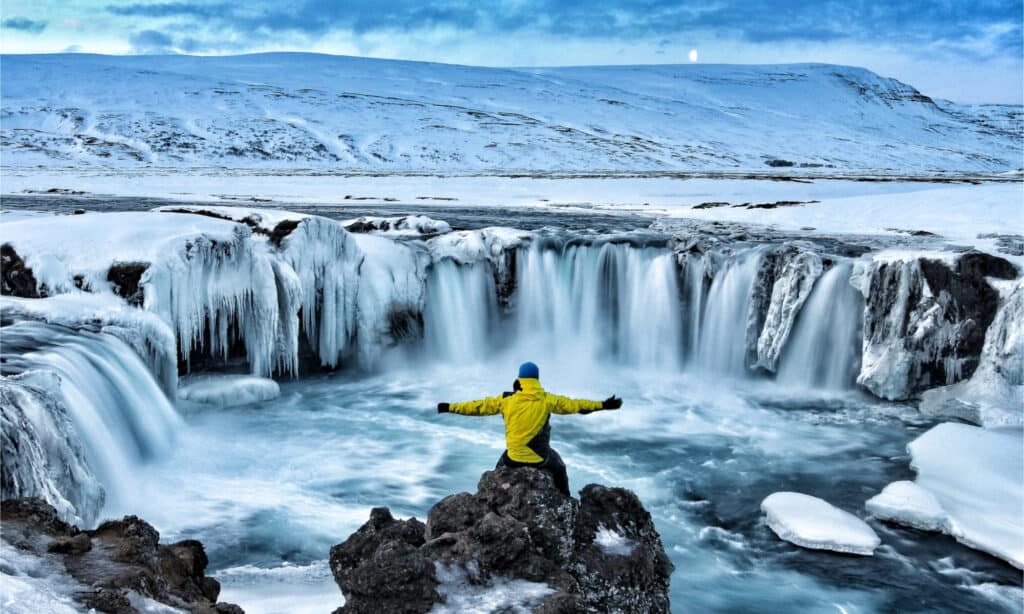
Iceland is perfect for those seeking a deeper connection with the great outdoors.
©evenfh/Shutterstock.com
Culture and Traditions
Over 60% of Iceland’s population has Norse ancestry, resulting in a culture deeply rooted in Norse heritage and folklore. The country takes great pride in preserving its traditions, which include music, dance, and cuisine. Traditional arts like weaving, silversmithing, and wood carving are also popular. Icelandic literary sagas, which frequently include heroes and mythical creatures, are an essential part of their cultural fabric as well. Icelandic locals emphasize the appreciation and protection of their natural resources, with a strong commitment to environmental sustainability. Visitors can experience the Icelandic way of life by exploring its villages, attending music festivals, or indulging in the country’s unique culinary delights. Popular dishes include Hangikjot (Icelandic smoked lamb), freshly caught seafood (primarily haddock, cod, and plaice), or Skyr (Icelandic yogurt).
Iceland also offers unique holidays. On Man’s Day and Woman’s Day, partners celebrate each other by gifting flowers and presents or going out for a special dinner. Porrablot, named after the Norse god Thor, is a traditional winter celebration in which participants hold speeches, recite poetry, and prepare grand feasts to share with friends and family. Jolabokaflod, known as the Christmas Book Flood, occurs at the start of November and is when books go on sale for the year. This tradition started during World War 2 so families could offer them as presents during the holidays. Today, this longstanding Christmas Eve tradition is celebrated by gifting each other new books to read before bed. After Christmas, everyone in the household discusses the books they read and gives their opinion.
Geography, Weather, and Notable Landmarks
Iceland, the Land of Ice and Fire, is a captivating island nation located between Greenland and Norway. Known for its dramatic landscapes, geothermal wonders, and vibrant cultural scene, Iceland offers a truly unique travel experience. With volatile volcanic activity, Iceland’s unique rugged terrain is perfect for both adventure seekers and nature enthusiasts. Its contrasting geography is defined by glaciers, waterfalls, black sand beaches, and geothermal hot springs — the most popular being the Blue Lagoon. Iceland experiences a cool, temperate climate, with generally mild winters and cool summers. The best time to visit Iceland is during the summer months — from June to August — when the daylight hours are at their longest.
Notable landmarks in Iceland include the breathtaking Gullfoss Falls, the mesmerizing Northern Lights, and the stunning glacial lagoon of Jokulsarlon. Thingvellir National Park is another great destination in the nation’s capital Reykjavik. Best known for the Mid-Atlantic Ridge and numerous ancient stone ruins, this park is a beautiful place to connect with nature and explore Iceland’s history. Whether you’re seeking to explore ice caves, soak in geothermal hot springs, or marvel at its beauty, Iceland promises to provide an enriching experience.
5. New Zealand
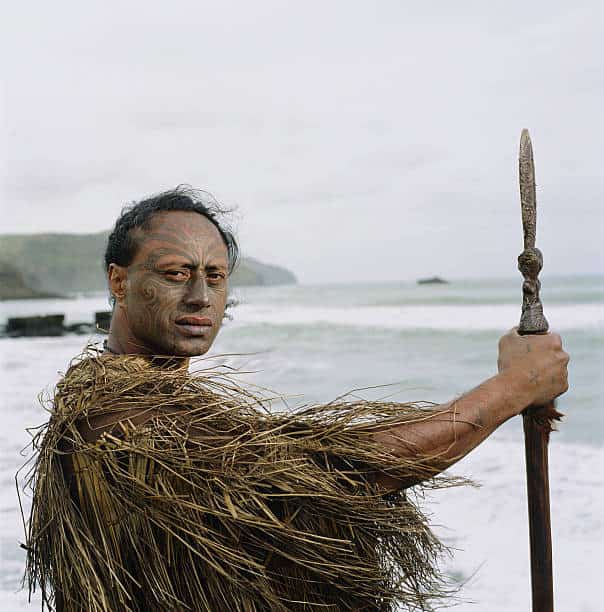
Māori primarily reside on the North Island, but their influence is seen throughout New Zealand.
©Mike Powell/ via Getty Images
Culture and Traditions
New Zealand‘s culture primarily has Maori, European, and Pacific influences. Maori people — the indigenous Polynesian inhabitants — have a strong presence in society, with their cultural traditions being deeply respected and celebrated throughout the country. Visitors have the opportunity to experience Maori art, music, and dance, as well as their unique traditions and holidays.
One of the most well-known traditions is the haka, which is a ceremonial Maori war dance or challenge. This powerful performance represents the tribe’s pride, strength, and unity. New Zealand folklore works to explain natural phenomena such as weather and astronomy. One of the most important holidays is Waitangi Day, which takes place on the sixth of February. It marks the anniversary of the initial signing of the Treaty of Waitangi — the first founding document of New Zealand.
Geography, Weather, and Notable Landmarks
New Zealand, a land of around 4.5 million people, is a captivating country located in the southwestern Pacific Ocean. Known for its stunning beauty and local hospitality, New Zealand offers a diverse range of experiences. Its geography is characterized by snow-capped mountains, pristine lakes, lush forests, and picturesque coastlines. From the dramatic fjords of Milford Sound and the Bay of Islands to the geothermal wonders of Rotorua and Wai-O-Tapu, New Zealand’s natural wonders never cease to amaze. The country is also home to an array of wildlife, such as Kiwi birds, the national animal. The country experiences a temperate maritime climate, with mild, wet winters and warm summers. The best time to visit New Zealand is during the summer months — December to February — when the weather is most favorable for outdoor activities and exploration.
Favored stops in New Zealand include Fiordland National Park and the city of Auckland — home to the iconic Sky Tower. Heading to the capital city of Wellington, visitors can tour the Zealandia Wildlife Refuge or take a quick tour of the city in its famous cable cars. If you are seeking adventure, travel to Queenstown, where adrenaline-fueled activities like bungee jumping and jet boating await. New Zealand offers a truly immersive experience for those seeking natural beauty, cultural richness, and remarkable landmarks. This makes it the perfect destination for those with a wide range of interests.
6. Poland
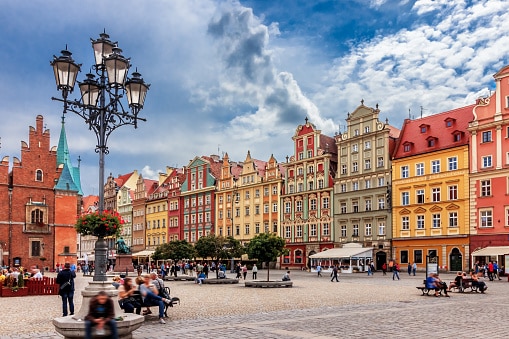
Market Square in Wroclaw, Poland, is a well-known and loved destination for locals and tourists.
©LaraIrimeeva/iStock via Getty Images
Culture and Traditions
Poland, nicknamed the Land of Fields, is a country with captivating traditions and a vibrant culture deeply rooted in its history. Valuing collectivism over individualism, Polish people are known for their straightforwardness, hard-working mentality, and honesty. Poland is also one of the most religious countries in Europe, with most of its population belonging to the Roman Catholic Church.
Because of this religious impact, Christmas and Easter are two of the most popular holidays in Poland. Caroling, nativity plays, and midnight mass are some of the most important aspects of the winter holiday. Additionally, on Christmas Eve, it is tradition to set an empty seat at the dinner table for a traveler or homeless person. This practice is carried out so no one has to celebrate Christmas alone.
Delving into Polish culture means indulging in its cuisine. This includes pierogis (dumplings), bigos (hunter’s stew), and delicious pastries like paczki (Polish donut, usually filled with jelly or cream) or kolaczki (cream cheese cookies). Traditional folk dances, such as the polka, and festivals like the Krakow Christmas Market or Wianki Midsummer Night celebration showcases the country’s lively spirit and culture. Celebrated on the first day of spring is The Drowning of Marzanna. This festivity is attributed to Morana, the Slavic goddess of death, winter, disease, and nature. On this day, a human-like figure is braided from straw, dressed in women’s clothing, set on fire, and “drowned” in the river. This pagan ritual aims to ward off winter for as long as possible, instead encouraging the return of spring.
Geography, Weather, and Notable Landmarks
Located in Central Europe, Poland is home to picturesque landscapes like the Baltic Sea coastline and the Tatra Mountains. Its geography offers a range of outdoor adventures, including hiking, skiing, and exploring the many charming medieval towns. The weather in Poland is characterized by distinct seasons, with warm summers and cold winters. The best time to visit depends on personal preferences, but spring and autumn are among the most popular. This is due to the mild temperatures and blossoming nature. Winter, on the other hand, brings forth festive snowy landscapes, traditional Christmas celebrations, and bustling night markets.
In addition to its cultural experiences and culinary scene, Poland boasts an array of remarkable landmarks. The historic city of Krakow, with its stunning Old Town and iconic Wawel Castle, is a UNESCO World Heritage site. The capital city of Warsaw offers a blend of shopping centers with World War II historic sites. Some notable places include the Royal Castle and the Warsaw Uprising Museum. Other notable destinations include the haunting Auschwitz-Birkenau concentration camp, the medieval Malbork Castle, and the charming city of Wroclaw. Poland’s layered culture and alluring history create a captivating place for visitors. From indulging in delicious cuisine to discovering awe-inspiring landmarks, Poland offers a truly immersive experience for all.
7. Scotland

Scotland is famous for its remarkable castles, diverse wildlife, stunning geography, and captivating legends.
©Swen Stroop/Shutterstock.com
Culture and Traditions
Known for its ancient castles and breathtaking terrain, Scotland holds a rich tapestry of culture that has evolved over a thousand years. Its people can be divided into two main groups. Highland Scots are people of Celtic (Gaelic) descent, and Lowland Scots are people of Germanic descent. Both groups hold high values of wisdom, justice, compassion, and integrity.
Scottish culture is well-known for its cuisine, sports, and traditions. Haggis is one of the most popular traditional dishes in Scotland. It is a puddling-like dish that contains seasoned sheep or calf offal, suet, and oatmeal, served in the boiled stomach of a sheep. Cullen skink is a common soup consisting of smoked haddock, potatoes, and onions. Shortbread, porridge, scones, and cranachan — a dish made with oats, whiskey, fresh raspberries, cream, and honey — are a few sweet dishes that originate from this country.
Sports like football, rugby, and golf are also prominent aspects of Scottish culture. Ceilidhs are common social events with traditional music, performances, folk dancing, and storytelling. Additionally, Scotland is famous for its unique bagpipe music and all of the folklore and legends that originated there, including the tale of the Loch Ness Monster.
Geography, Weather, and Notable Landmarks
Located in the northern part of the United Kingdom, the country features a diverse geography that ranges from rugged mountains to rolling hills, serene lochs, and picturesque coastlines. The majestic Highlands, with their dramatic landscapes and diverse wildlife, is home to the iconic Loch Ness. The Isle of Skye and Cairngorms National Park both feature an almost otherworldly beauty, attracting an average of 650,000 visitors from all over the world each year. The weather in Scotland can be unpredictable, but it generally has mild summers and cool winters. The best time to visit Scotland is during the summer — June to August — when the days are longer and the countryside is in full bloom.
Scotland is home to numerous notable landmarks. Perched atop an ancient volcanic rock is Edinburgh Castle, a site that offers panoramic views of the capital city of Edinburgh and hosts the famous Palace of Holyroodhouse. The Isle of Skye’s Fairy Pools and the mystical standing stones of Callanish on the Isle of Lewis are two intriguing sites steeped in history and folklore. Exploring the historic streets of Glasgow, with its Victorian architecture, cobblestone streets, and vibrant art scene, is another cultural delight. Whether you seek adventure in the Highlands, cultural exploration in Edinburgh, or simply enjoy a journey through mythical tales and landscapes, Scotland is the perfect place to go!
8. Thailand
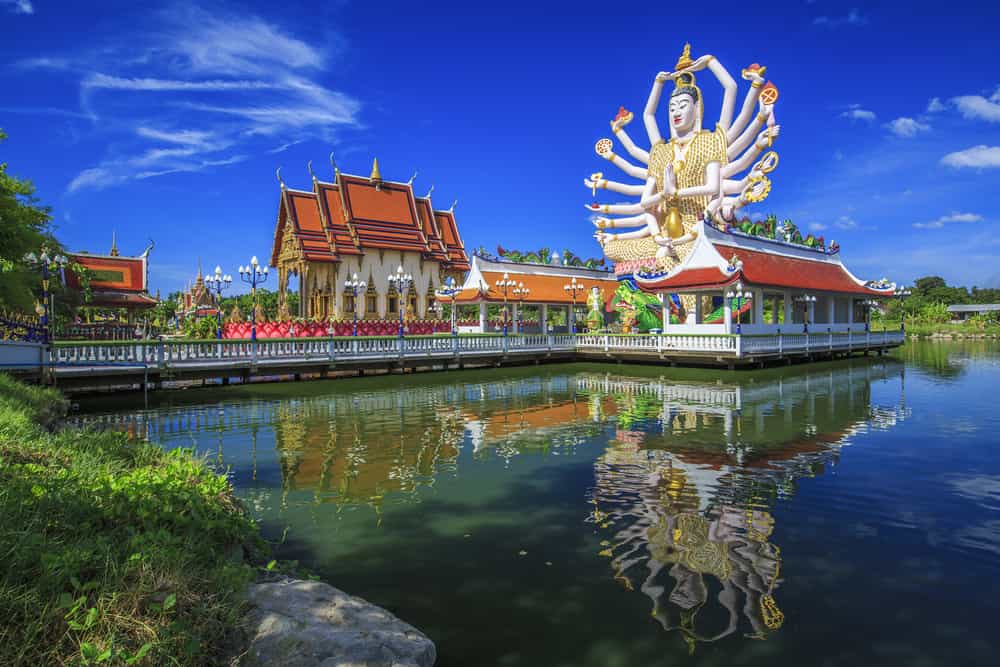
Wat Plai Laem, located in Ko Samui, is a prime example of the majestic temples in Thailand.
©nate samui/Shutterstock.com
Culture
With influences from Myanmar (Burma), India, and China, Thailand is known for its bold clothing, tropical landscapes, and spicy cuisine. The architecture is unique to the country, with many buildings featuring open-air spaces and steep-sloping tile roofs with up-turned edges. Since 95% of the country’s residents identify as Theravada Buddhists, Thai culture is strongly influenced by religion. They value serenity and try to live with a jai yen — a cool, calm heart. Nicknamed the Land of Smiles, this country has a positive history of friendly, helpful locals.
Thai people greet each other with a wai, an action where people press their palms together as they bow or curtsy. There is a plethora of other cultural rules as well, such as foot placement and head touching. Because feet are considered the most unclean part of the body, it is rude to point your feet in the direction of someone else or have your feet face any depiction of Buddha. Alternatively, the head is the most sacred part of the body. That is why it is recommended to not touch another person’s head or ruffle their hair.
Traditions
There are many unique traditions and holidays in Thailand. Songkran, Thai New Year, is famous for its light-hearted water fights — a practice that symbolizes cleansing and renewal. Loy Krathong, the Festival of Lights, is one of the largest holidays in the country and occurs on the first full moon of the 12th calendar month in the Thai Lunar calendar. This festival consists of people floating beautifully decorated baskets along rivers and lakes. The annual Monkey Buffet Festival is celebrated by gifting fruits and vegetables to the local monkey population. This banquet is held in honor of the Macaques monkeys, a sacred animal believed to bring good fortune if they are treated well. Another important aspect of Thai culture is its cuisine, renowned for its bold flavors and aromatic spices. Dishes like pad Thai, green curry, and mango sticky rice are the most popular.
Geography, Weather, and Notable Landmarks
Located in Southeast Asia, Thailand showcases a geography that ranges from lush jungles and misty mountains in the north to pristine beaches and beautiful turquoise waters in the south. Thailand has three distinct seasons: the cool season from November to February, the hot season from March to May, and the rainy season from June to October. The best time to visit is during the cool season when temperatures are most pleasant, making it ideal for exploring the country’s landmarks and cultural sites.
Thailand boasts a wealth of notable landmarks and activities. The bustling capital city of Bangkok is riddled with ornate temples, open-air markets, and an expansive street food scene. The ancient cities of Ayutthaya — a UNESCO World Heritage site — and Sukhothai both offer a glimpse into Thailand’s historical past.
The stunning temples of Wat Arun, Wat Phra Kaew, and Wat Phra That Doi Suthep showcase intricate architecture and hold deep spiritual significance to locals. The idyllic islands of Phuket, Krabi, and Koh Samui beckon people from all over the world to their crystal-clear waters and palm-fringed shores. Khao Yai National Park, a UNESCO World Heritage Site, features breathtaking scenic views and prominent wildlife. The unique floating markets of Bangkok also provide an immersive cultural experience for all those who venture to them. With a plethora of activities to choose from, Thailand is one of the best countries to explore to get a taste of classic cuisine, seek religious enlightenment, learn engaging history, or witness traditional Thai entertainment!
Summary of the 8 Countries That End in ‘Land’
| Number | Country |
|---|---|
| #1 | England |
| #2 | Finland |
| #3 | Greenland |
| #4 | Iceland |
| #5 | New Zealand |
| #6 | Poland |
| #7 | Scotland |
| #8 | Thailand |
The photo featured at the top of this post is © hamzahstudio/Shutterstock.com
Thank you for reading! Have some feedback for us? Contact the AZ Animals editorial team.







